7 Signature Architectural Attractions in San Diego
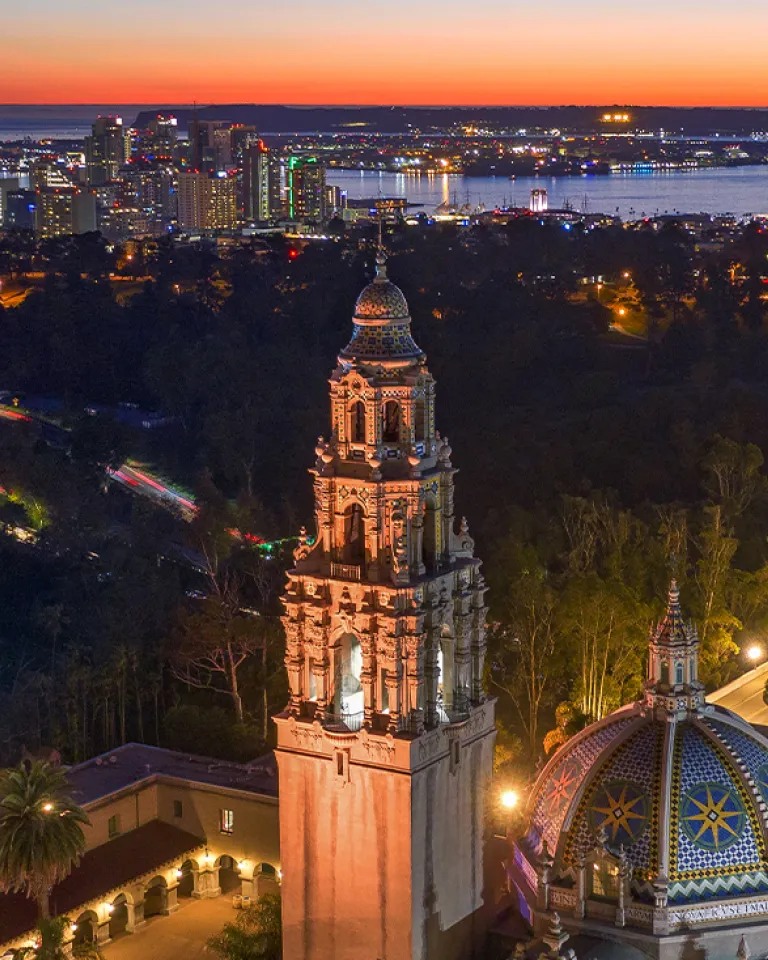
With its unique identity as a beach town, a border city, a bustling international port and a former frontier burg, San Diego has mixed and matched architectural styles to surprising and sometimes dazzling effect over the decades. While the influence of the region's early Spanish settlement remains prominent, plenty of signature architectural sites here draw on other, more disparate traditions. Here's a look at 7 eye-catching San Diego buildings and districts that architecture-minded visitors will love discovering.
Gaslamp Quarter
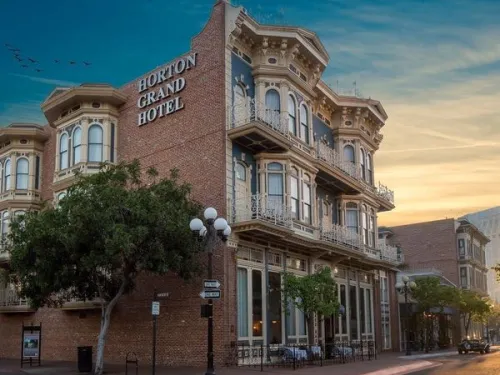
Gaslamp Quarter
The classic arched sign that spans Fifth Avenue at the gateway to San Diego's historic Gaslamp Quarter dates only from 1990, but it beckons visitors to a Downtown district that has a vibrant and varied history. Much of that history is written in the vintage Victorian stylings of numerous buildings that date to the days when the famous ex-lawman Wyatt Earp ran a handful of Gaslamp gambling halls and saloons. Earp actually lived for a time in the Horton Grand Hotel, one of nearly 100 historic buildings spread over about 16 blocks here. A great place to begin exploring the Quarter — which is listed on the National Register of Historic Places — is the Gaslamp Museum at the Davis-Horton House. Amazingly enough, this 1850 saltbox-style house, the oldest standing structure in Downtown, was originally built in Maine, then disassembled and shipped around Cape Horn via clipper ship to its new home in California.
Balboa Park - Spanish Colonial Revival
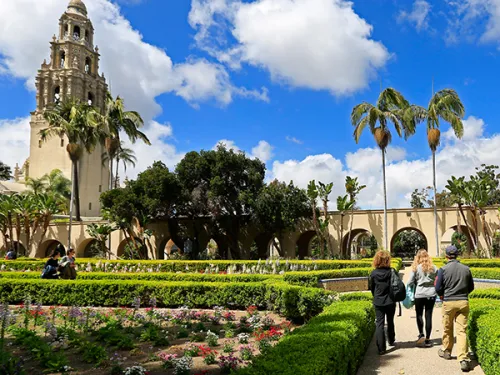
Balboa Park - Spanish Colonial Revival
Most of the distinctive Spanish Colonial Revival buildings that dominate Balboa Park — San Diego's cultural heart, and the largest urban cultural park in the country — were built to house two major expositions that took place in 1915-16 and 1935-36. Now, they're a beloved part of San Diego's identity, from the soaring California Tower (featured in the 1941 film "Citizen Kane") to the ornate Casa del Prado and House of Charm, with their baroque flourishes. But other, more surprising styles pop up in the park, too, such as the cylindrical, retro-futurist Ford Building, which now houses the Air & Space Museum, and the blocky, modernist Timken Museum of Art. Learn firsthand about all of it via a range of great guided and self-guided tours.
Old Town

Old Town
One of the great charms of Old Town San Diego State Historic Park is that its buildings and other structures encompass such a huge swath of local history. On Presidio Hill just above the park is the spot where modern California began, at the site of the original 1769 Franciscan mission. The location is now home to the domed, mission-style Junipero Serra Museum, built in 1929 and operated by the San Diego History Center. In Old Town proper are such examples of 19th-century California architecture as the adobe Casa de Estudillo and the Greek Revival-style Whaley House – situated close to the Iipay ~ Tipai Kumeyaay Mut Niihepok Land of the First People Area, which honors the original Kumeyaay settlers. And nearby are the stately, restored Victorian homes of Heritage Park.
Mission Basilica San Diego de Alcalá
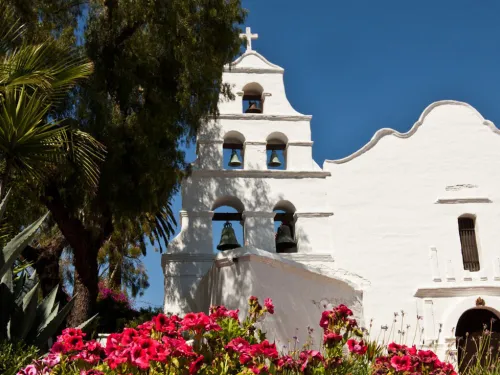
Mission Basilica San Diego de Alcalá
When Father Junipero Serra and his fellow Franciscan monks decided to move their original mission from San Diego's Presidio in 1774, they chose a spot about six miles inland in what's now known as Mission Valley. Mission Basilica San Diego de Alcalá — the first of California's 21 missions — remains on that site today, though it has long since been rebuilt and restored. The mission now serves as an active Catholic parish, but visitors are free to explore the fascinating site, with its signature 46-foot-tall bell tower (featuring one of the original bells) and numerous period adobe structures. Tours are available, and the on-site museum offers a wealth of mission history.
Old Point Loma Lighthouse
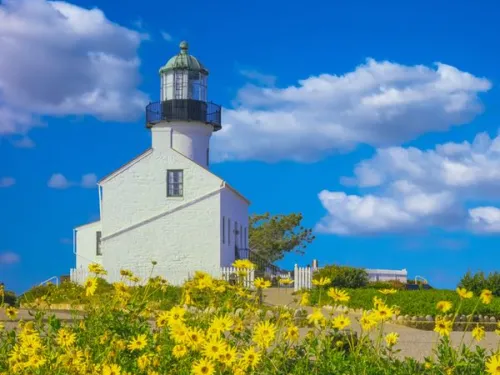
Old Point Loma Lighthouse
The centerpiece of the stunningly scenic Cabrillo National Monument, this well-preserved 1855 lighthouse sits atop a 400-foot promontory with sweeping views of Coronado, San Diego Harbor, Mexico and the glittering Pacific. The beacon was first lit in 1855, and sat at a higher elevation than any other working lighthouse in the country for its time. (A little too high, as it turned out; due to frequent fog at that elevation, the lighthouse was decommissioned in 1891 in favor of a new beacon near the waterline.) Since then, the boxy lighthouse with its signature, squat tower has become a San Diego icon, and is part of an extensive park area named for the first European to set foot in California, just down the hill from the old lighthouse site. Visitors can explore the rooms where generations of lightkeepers lived, and the tower is occasionally open to the public as well.
Irving Gill's La Jolla
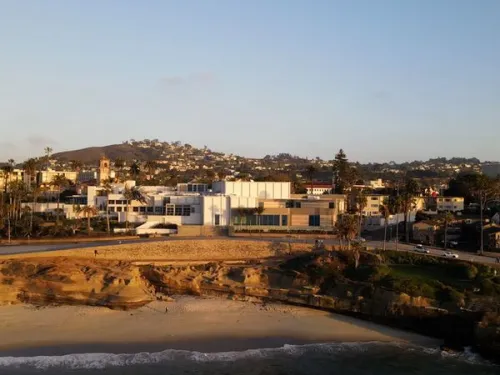
Irving Gill's La Jolla
Perhaps the most famous architect to make his mark in San Diego, Irving Gill designed 12 Southern California buildings that are now on the National Register of Historic Places. Gill's impact on San Diego is most evident in La Jolla, which boasts numerous Gill buildings. They include what was once the oceanfront Ellen Browning Scripps residence and is now the world-renowned La Jolla campus of the Museum of Contemporary Art San Diego, which reopened in 2022 after a $105 million renovation. The original Gill-designed residence remains incorporated into the front of the museum, and the renovation relocated a row of columns so that the views of his 1916 structure are now unimpeded. The museum and other Gill buildings — including his designs for The Bishop’s School and the La Jolla Women's Club — reflect the architect's clean, unadorned style and such influences as the Arts & Crafts movement and the Prairie School. The La Jolla Historical Society offers a self-guided tour titled "Irving Gill's San Diego," and itself owns and operates three historic buildings in what's known as the Scripps/Gill Cultural Zone.
Swami's

Swami's
A California landmark that's both a spiritual site and a kind of holy temple for the surfing community, Swami’s is distinguished by the golden lotus towers that rise from the west side of Coast Highway 101 at the southern gateway to the classic North County beach town of Encinitas. The place — known officially as the Encinitas Hermitage, Retreat and Gardens of the Self-Realization Fellowship — was the brainchild of SRF founder Paramahansa Yogananda, who began building it in the 1930s on a blufftop parcel donated by a disciple of the religious organization. The SRF continues to run the center, distinguished by its spiraling towers, whitewashed perimeters and gorgeous neighboring Meditation Gardens. And, of course, by its commanding views of Swami's Beach, the world-famous righthand break memorialized in the Beach Boys' 'Surfin' USA.
